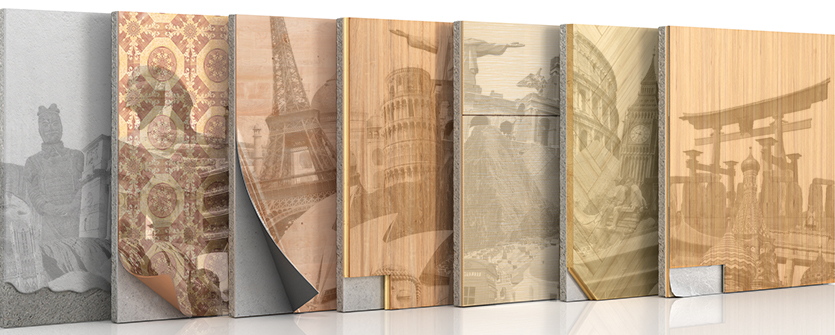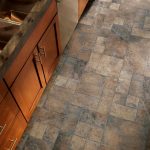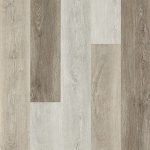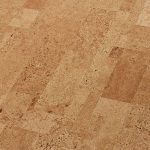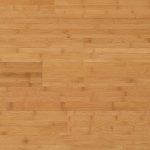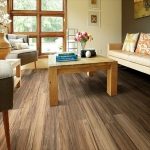Is the floor your standing on covered with carpeting, vinyl, or made of wood? Maybe Tile, cement, cork, or even rubber? We have plenty of options for covering our floors today, with even ancient types of floors, used thousands of years ago are still in use to this very day in different parts of the world. Times change, materials have changed, and expanded in variety and use, styles have changed, but all are still in use in one form or the other. Here’s a look at what’s been right underfoot for the past 5,000 years or so
ANCIENT EGYPTIAN FLOORING
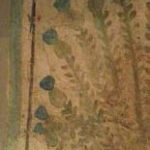
Cornflowers 18th Dyn. Egypt Fragment of a painted floor.
About 5,000 years ago, Egyptians developed stone construction. Stone and brick floors began to appear. Soon these floors became works of art as well as a useful surface for the home. Colored tiles created patterns called mosaics across the floor to add beauty to the house.
Egypt did not have any great forests nor many tall trees. Its native timber was mostly of low quality and could only be cut into short planks. Acacia, carob, juniper, doum palm, sycamore and some other local wood were used, hardwoods like ebony were imported from eastern Africa, and cedar and pine from the Lebanon.
The oldest piece of plywood was found in a third dynasty coffin, made of six layers of wood each 4 mm thick and held together by wooden pegs. Like modern plywood the grain of its layers was arranged crosswise to give it added strength.
According to the Handbook to Life in Ancient Egypt, tongue and groove goes all the way back to the ancient Egyptians. Wood was (and still is) scarce in that part of the world, so the Egyptians needed to come up with ways of joining small pieces of wood together.
FLOORS IN ANCIENT GREECE
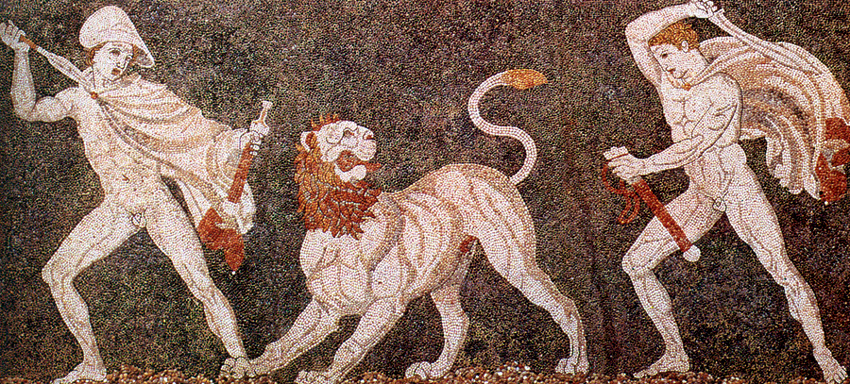
As far back as 3,000 years ago, Greeks created pebble mosaics for their floors. Gradually they began using oblong stone shapes rather than pebbles. This technique was used in ancient France, Spain, Italy, and Northern Europe.
Lion hunt. Mosaic from Pella (ancient Macedonia), late 4th century BC, depicting Alexander the Great and Craterus.
Housed in the Pella Museum. “A floor mosaic of the late fourth century, excavated in one of the dining rooms of the ‘House of Dionysus’, a palatial mansion at Pella
FLOORING OF THE ROMAN EMPIRE
During the Roman Empire (27 BC to AD 476) engineers found another advantage of stone floors – heating. They built a small basement with pillars under the floor to support large stone squares. A vent was created at one end of the basement, and a fire was started under the opposite end. The heat and smoke from the fire would heat the stone floor above.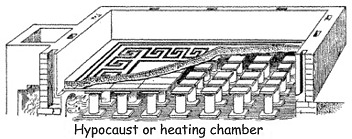
The Romans brought underfloor heating to Britain over 2000 years ago. With their unparalleled construction and road building skills, they also knew that the most comfortable and efficient way to heat their homes was by heating the floor. Underfloor heating ‐ or hypocausts ‐ as they were known then, was a luxury reserved for the rich and powerful.
Evidence also shows that ceramic tiles were used for floors thousands of years ago. The Romans introduced tile-making in portions of Western Europe. After the fall of Rome, however, the craft was forgotten for centuries. Tile floors appeared and disappeared. Decorated tiles were used in Turkey, the Middle East, and in the Netherlands during the 1600s. It wasn’t until the mid-1800s that they became popular again throughout Europe.
The modern tile industry began in 1843 when Herbert Minton revived tile-making in England. In Latin and South America, plain, undecorated ceramic tiles were common. Tiles became popular in North America during the late 1500s and flourished until about 1930.
FLOORS OF THE MIDDLE AGES
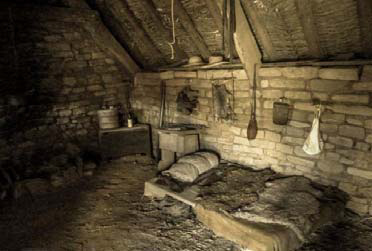 In many early homes, the floor was just a patch of ground. This is still true in some parts of the world, such as places in Africa where the weather is always warm. Dirt is a good, inexpensive surface. Hay, straw, and cow dung are sometimes strewn on the floor and tamped down as people walk on it, creating a surface almost as hard as cement. By mixing cow dung into the dirt they could smooth out the area. They used broken up mint leaves as a deodorizer to cover the stench.
In many early homes, the floor was just a patch of ground. This is still true in some parts of the world, such as places in Africa where the weather is always warm. Dirt is a good, inexpensive surface. Hay, straw, and cow dung are sometimes strewn on the floor and tamped down as people walk on it, creating a surface almost as hard as cement. By mixing cow dung into the dirt they could smooth out the area. They used broken up mint leaves as a deodorizer to cover the stench.
The earliest known wood floors came into use during the Middle Ages. At first, rough planks were laid across the floor. Then these were sanded or smoothed by rubbing them with stone or metal. Later, varnishes or stains were applied to help smooth the floor and make it last longer.
Stains were also used to add patterns to the floors. Sometimes inlaid patterns were created by carving shapes out of different-colored woods and piecing them together to form patterns, like a puzzle. People also painted patterns and designs on the floor.
A Timeline Fact:
“Most people got married in June. Why? They took their yearly bath in May, so they were till smelling pretty good by June, although they were starting to smell, so the brides would carry a bouquet of flowers to hide their b.o.”
FLOORS IN THE 1500’s
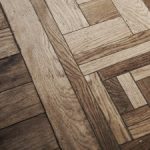 In Europe during the 1600s, French nobles began installing fancy wood floors in their homes. These floors were often either parquet or marquet. In parquet flooring, veneer (thin pieces of wood, usually 1/8 inch thick or less) is applied to form geometric patterns. The best known modern day example of parquet flooring is the Boston Celtics’ basketball court. They have used a parquet floor since 1946.
In Europe during the 1600s, French nobles began installing fancy wood floors in their homes. These floors were often either parquet or marquet. In parquet flooring, veneer (thin pieces of wood, usually 1/8 inch thick or less) is applied to form geometric patterns. The best known modern day example of parquet flooring is the Boston Celtics’ basketball court. They have used a parquet floor since 1946.
Marquet flooring is very similar to parquet, but more complex designs or even pictures can be formed. Once these strips were applied to the base flooring, workers had to hand scrape the entire floor to make it smooth and level. After that, they were stained and polished. Naturally, this was very expensive, so only noblemen could afford it. The noble wannabes sometimes tried to emulate them by installing wood floors with designs painted on them. Those farther down the social ladder had dirt floors. When you came into the house you would notice most times that the floor was dirt. Only the wealthy had something other than dirt, that’s where the saying “dirt poor” came from.
The wealthy would have slate floors. That was fine but in the winter they would get slippery when they got wet. So they started to spread thresh (wheat grain hulls) on the floor to help keep their footing. As the winter wore on they would just keep adding it and adding it until when you opened the door it would all start slipping outside. So they put a piece of wood at the entry way, a “thresh hold.”
WOOD FLOORS IN THE 1800’s
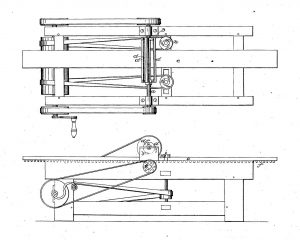
Woodworth Planing and Matching Machine
In the 1800s, wealthy Americans started installing parquet floors in their homes. Those who were well off but not wealthy had tongue and groove flooring that was painted. Poorer Americans had wood floors without tongue and groove. This was the era of the Industrial Revolution. In 1827, Malcolm Muir of Scotland patented a machine for milling tongue and groove flooring. A year later, William Woodworth patented a similar machine in the United States. These machines helped bring about mass production of wood flooring late in the 1800s.
WOOD FLOORS IN THE NEW WORLD
When Europeans first came to settle the New World, they found vast stands of virgin timber. Naturally, the made use of this plentiful resource, and installed wood flooring in their homes. Unlike the French nobility, there was nothing fancy about these floors ‐ No sanding or finishing. To make use of as much wood as possible from a felled tree, these floors were generally composed of planks of varying width. Planks cut from the center of the log would be the widest, while planks cut from the sides would be progressively thinner. In the northeastern United States most flooring was made of eastern white pine. In the southern states, southern yellow pine (which is significantly harder than eastern white pine) was often used. As in France, those less affluent in this time period painted their floors.
WOOD FLOORS IN THE 1900’s
By the Edwardian Era, (1901‐1914) wooden tongue and grove floor boards were the most popular domestic flooring. Parquetry patterns were found framing the edges of carpet (back then carpet was much more expensive than wood). Block hardwood floor could be laid on top of concrete using hot tar as an adhesive. Some block floors survive today and can be removed, cleaned of the tar and re‐laid in a modern mastic. Herringbone is a similar form of tongue and grove type floor popular in this era.
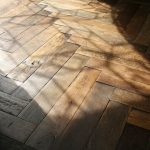 By the 1920’s and 30’s wooden floors came into competition with linoleum and cork floors, which offered a more basic geometry, and less maintenance. This modern movement continued to emphasize hard durable surfaces. Varnishes improved hardness and curing time with the addition of alkyd resin and in the 1930’s polyurethane was the ideal no‐wax finish for floors. This allowed wood to play a prominent role throughout the Modern Era (1920‐1950). Even then, wall‐to‐wall carpeting was still terribly expensive.
By the 1920’s and 30’s wooden floors came into competition with linoleum and cork floors, which offered a more basic geometry, and less maintenance. This modern movement continued to emphasize hard durable surfaces. Varnishes improved hardness and curing time with the addition of alkyd resin and in the 1930’s polyurethane was the ideal no‐wax finish for floors. This allowed wood to play a prominent role throughout the Modern Era (1920‐1950). Even then, wall‐to‐wall carpeting was still terribly expensive.
The close of World War ll brought a housing boom, which ironically spelled doom for the wood floor trade. New housing built for the vets could have the broadloom cost included in the loan. Therefore, hardwood was still laid for a while; sanded and finished it was promptly covered up with wall‐to‐wall carpet before the new owners moved in. And soon with the use of plywood as a sub-floor they just forgot about the hardwood altogether. So for about 30 years (1950‐1980) the wood flooring industry struggled just for survival, most companies had to install carpet to stay in business at all.
FLOORING TODAY
Pre-finished flooring had already been around for some time. With the downgrading of skills (and in some regions lack of any floor sanders) by the late 1980’s pre-finished grew in popularity until they make up at least half the newly installed hardwood floors today. Pre-finished started out employing deep V groove at the edges of the planks but as customers demanded a smoother floor those edges became only slightly chamfered. And today…
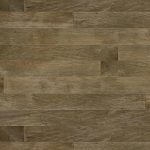
Hardwood Flooring
Every hardwood floor today opens up a remarkable range of style and design options. There are floors that harken back across the ages and continents to exotic times and places. Today hardwood has no limitation only your lifestyle and imagination! That means you can create a completely different ambiance in every room of your home inspired by nature’s extraordinary diversity. Smoked Neutrals midway through the decade, designers are moving away from overusing stainless steel, chrome, and brass in favor of the smooth natural elegance of smoked woods. A soft palette of grey, taupe, white, and cream tones offers a lovingly lived-in look and a subtly rich texture that changes with the light.
Au Naturel with “Au naturel” you find the raw beauty of wood in all of its finishes. What catches the eye is the intricacy of the grain. Nature’s patterns are revealed to soften any décor. Isn’t that the appeal of a seaside resort—an invitation to reconnect with the natural world?
Rich Vintage part of the contemporary scene is built on a healthy reverence for the past. Rich Vintage evokes ancestral grandeur as easily as it does the simplicity of the homestead. Not surprisingly, rugged and warm browns dominate here, from deeply hewn to honey golden.
LAMINATE FLOORING
Laminate flooring is the most popular flooring being sold today. Laminate floors have been sold in Europe for over 20 years. Durability, design and installation ease have made it a popular choice in America since 1996. Its growth in the market continues at a very fast pace. The biggest advantage of laminate flooring products is that they are built for today’s active households. La
minate floors are reasonably easy for a DIY homeowner to install. Laminate flooring is packaged as a number of tongue and groove planks, which can be clicked into one another. Sometimes a glue backing is provided for ease of installation. Installed laminate floors typically “float” over the sub-floor on top of a foam/film underlayment, which provides moisture- and sound-reducing properties. A small gap is required between the flooring and any immovable object such as walls, this allows the flooring to expand without being obstructed. The advantages of low maintenance and the wide range of design will continue to propel the growth of a very remarkable product.
VINYL PLANK AND VINYL TILE
Developed to meet today’s demands, resilient vinyl floors look amazing and are tremendously durable. There are some incredible choices of Luxury Vinyl Tile(LVT), Luxury Vinyl Plank (LVP), and sheet vinyl flooring. Luxury vinyl flooring products have come a long way in style and design over the last several years. In fact, many popular brands of vinyl tile or composition tile mimic those of real wood, ceramic tile or natural stone.
ECO FRIENDLY CORK FLOORING
Cork floors are yet another sustainable flooring selection. It is harvested every nine years by taking the bark off of cork trees. Since each cork tree used for flooring can produce about 16 harvests in its lifespan; this harvesting is a trait of a lasting agro-forestry system, in which we use the natural resources around us without removing the entire resource from its surroundings.
Cork flooring is organic, recyclable as well as biodegradable, and no organic or manufactured product duplicates its residential properties. Cork flooring is natural choice for hypoallergenic, mildew and mold, wetness, dust, as well as pollen resistant flooring. Cork floors are anti-static, it is suggested for usage where computer systems and computerized devices are installed. Cork flooring can be utilized anywhere in your house (listed below as well as above grade) since it is versatile, water-resistant, soft and warm.
Cork bark is made up of a tiny sealed honeycomb cellular structure (14-sided polyhedrons) containing gas of 90% air. These cells provide resiliency (cushion) and insulation and there are about 40 million of these cells per cubic centimeter. Cork can be compressed up to 40% and quickly returns to its original shape. This all works to make cork a very special flooring material. The air trapped inside the cellular structure of cork provides a natural shock absorbing feel to the floor.
NATURAL BAMBOO FLOORS
A Eco-Freindly type of flooring that has developed over the years is a bamboo floor covering. In today’s world, in addition to oak hardwoods, maple hardwoods, bamboo flooring has found itself as an appealing option for flooring because of its physical correlations to hardwoods. While not an actual hardwood it is very resilient and is found in numerous colors, and manufactured in visually striking styles and finishes.There are certain types of bamboo that can be extremely strong, hard, and durable. Natural, un-carbonized bamboo that was properly harvested and manufactured can be as durable as red oak. Strand woven bamboo can be manufactured even harder than that. Bamboo is a green alternative to traditional hardwood due to it being a grass from asia with a tremendous regrowth rate and it is 100% Recyclable!
WATERPROOF FLOORS
The “w” stands for wood, but the fact is, the majority of Waterproof WPC type products entering the market today do not contain wood at all. WPC is a composite material made of thermoplastics, calcium carbonate, and wood flour. Extruded as a core material, it is 100% waterproof, rigid and dimensionally stable. The big difference for WPC over laminate is that it is waterproof and suitable for environments in which laminate shouldn’t normally be used—typically bathrooms and basements that have potential moisture issues.
The main differences are that Wood Plastic Composites are waterproof and can go over most subfloors without much preparation. Traditional vinyl floors are flexible and any unevenness in the subfloor will transfer through the surface. Compared to traditional glue-down LVT or solid-locking LVT, WPC waterproof flooring products have a distinct advantage because the rigid core hides subfloor imperfections. In addition, the rigid core allows for longer and wider formats. With WPC, it is not necessary to worry about the preparation LVT would require for use over cracks and dips in concrete or wooden subfloors.
THE CHANGE CONTINUES…RIGHT UNDER YOUR FEET!
Intricate patterned wood floor installations were the hallmark of wealth and status back in the day because it meant you could afford the artisans. With today’s state-of-the-art technologies, you can create easy-to-install elegantly patterned hardwood flooring, gorgeous tile, in endless patterns. The flooring products available today, you can create a truly original flooring space that plays with grain, line, light, color, style and texture in anyway that strikes you.
To explore the many options of flooring styles available Click Here, for reviews on the top flooring brands in the business Click Here.
